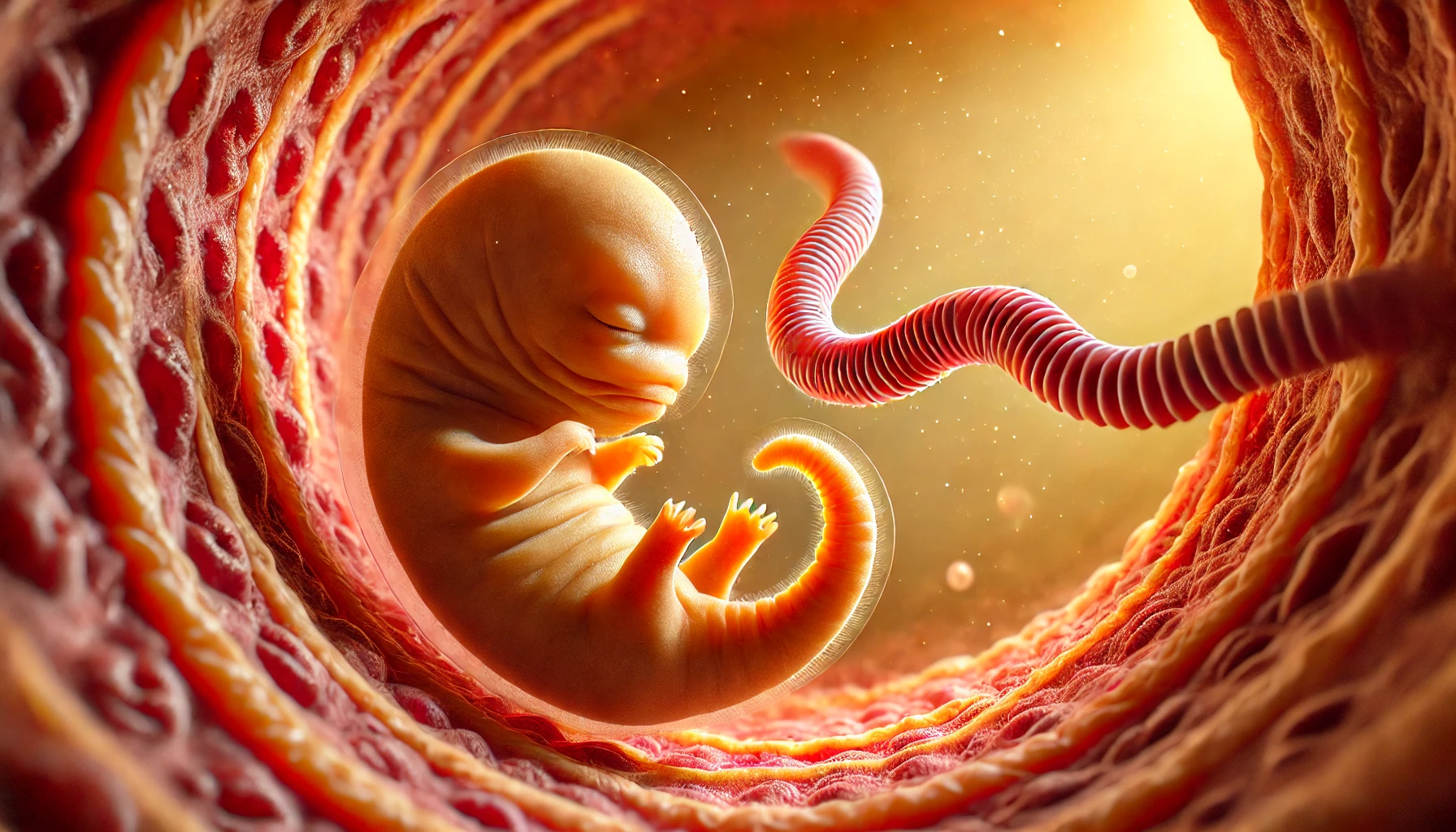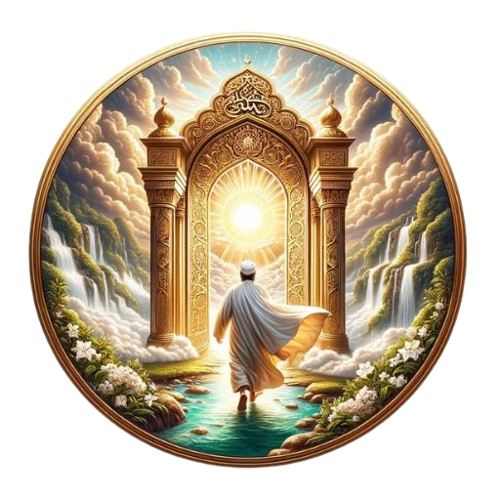Embryology, the study of the development of an embryo from fertilization to the fetal stage, has fascinated scientists and scholars for centuries. However, long before modern science uncovered the intricate details of human development, the Quran revealed over 1400 years ago, provided astonishing insights into the stages of human creation. The accuracy of these descriptions in the Quran has led many to believe in its divine origin.
The Quranic Description of Embryology & Fetal Development
The Quran offers detailed descriptions of the stages of human development in the womb. These descriptions are found in several verses, with the most comprehensive account provided in Surah Al-Mu’minun:
1. Creation from Clay:
The Quran begins its account of human creation with the origin of man from clay. Allah says:
(Quran 23:12)
Arabic: وَلَقَدْ خَلَقْنَا الْإِنسَانَ مِن سُلَالَةٍ مِّن طِينٍ
Transliteration: Walaqad khalaqnal insana min sulalatin min teen.
Translation: “And certainly did We create man from an extract of clay.”
This verse emphasizes the initial stage of human creation, where the elements that constitute the human body are derived from the earth. This can be interpreted as the biochemical elements that make up the human body—such as carbon, hydrogen, oxygen, and nitrogen—originating from the earth.
2. The Nutfah (Drop of Fluid):
The Quran describes the next stage as the creation of man from a “nutfah,” a drop of fluid:
(Quran 23:13)
Arabic: ثُمَّ جَعَلْنَاهُ نُطْفَةً فِي قَرَارٍ مَّكِينٍ
Transliteration: Thumma jaAAalnahu nutfatan fee qararin makeen.
Translation: “Then We placed him as a drop (of fluid) in a firm lodging.”
This verse refers to the fertilization of the egg by the sperm, resulting in the formation of a zygote (nutfah). The phrase “firm lodging” refers to the secure environment of the uterus, where the embryo will develop.

3. The Alaqah (Clinging Clot):
The next stage described in the Quran is the development of the zygote into a clinging clot, known as “alaqah”:
(Quran 23:14)
Arabic: ثُمَّ خَلَقْنَا النُّطْفَةَ عَلَقَةً فَخَلَقْنَا الْعَلَقَةَ مُضْغَةً فَخَلَقْنَا الْمُضْغَةَ عِظَامًا فَكَسَوْنَا الْعِظَامَ لَحْمًا ثُمَّ أَنشَأْنَاهُ خَلْقًا آخَرَ ۚ فَتَبَارَكَ اللَّهُ أَحْسَنُ الْخَالِقِينَ
Transliteration: Thumma khalaqnan nutfata AAalaqatan fakhalaqnal AAalaqata mudghatan fakhalaqnal mudghata AAithaman fakasawnal AAithama lahman thumma ansha/nahu khalqan akharafatabaraka Allahu ahsanu alkhaliqeen.
Translation: “Then We made the drop into a clinging clot, and We made the clot into a (chewed) lump, and We made (from) the lump, bones, and We covered the bones with flesh; then We developed him into another creation. So blessed is Allah, the best of creators.”
The term “alaqah” has multiple meanings, including a clinging substance, a leech-like structure, or a clot of blood. These meanings remarkably correspond to the embryo’s early development stage when it adheres to the uterine wall and resembles a leech in shape and function. Moreover, the description of the embryo as a “chewed lump” (mudghah) corresponds to the somite stage of embryonic development, where the embryo has a segmented appearance, much like a chewed substance.

4. The Formation of Bones & Flesh:
The verse continues to describe the formation of bones and the subsequent covering of bones with flesh. This is a strikingly accurate description of the process known as ossification, where the cartilaginous structure of the fetus gradually turns into bone, and then muscles and flesh develop around these bones.
5. The Stage of “Another Creation”:
Finally, the Quran mentions that after the bones and flesh are formed, Allah “developed him into another creation.” This stage signifies the human fetus’s further development, where it begins to take a distinct human form, including the development of the senses, the brain, and other vital organs.
Correlation with Modern Embryology
The Quranic descriptions of embryological development remarkably align with modern scientific understanding. The process of fertilization, the formation of the zygote, the stages of embryonic development, and the differentiation of tissues into bones and flesh are all accurately depicted in the Quran. Modern embryology, which developed centuries after the Quran was revealed, has confirmed these stages, lending significant credibility to the divine nature of these revelations.
1. The Discovery of Embryology:
Modern embryology began to take shape in the 17th century with the advent of microscopes, which allowed scientists to observe the development of embryos. However, it wasn’t until the 19th and 20th centuries that the process of human development was fully understood. The Quran’s descriptions, provided over a millennium before these discoveries, have astonished scholars and scientists alike.
2. Acknowledgment by Scientists:
Prominent scientists have acknowledged the astonishing accuracy of the Quranic descriptions. For example, Dr. Keith Moore, a world-renowned embryologist, stated that the Quran’s statements about embryology could not have been derived from the scientific knowledge available in the 7th century at that time. He remarked, “It is clear to me that these statements must have come to Prophet Muhammad (Peace be upon him) from God (Allah) because almost all of this knowledge was not discovered until many centuries later.”
The Quran: A Divine Revelation
The Quran’s accurate description of embryology is one of the many signs that indicate its divine origin. The fact that these revelations were made at a time when scientific knowledge was rudimentary at best is a powerful argument for the Quran’s authenticity as the word of God.
1. The Inimitability of the Quran:
The Quran challenges humanity to produce even a single chapter like it:
(Quran 2:23)
Arabic: وَإِن كُنتُمْ فِي رَيْبٍ مِّمَّا نَزَّلْنَا عَلَىٰ عَبْدِنَا فَأْتُوا بِسُورَةٍ مِّن مِّثْلِهِ وَادْعُوا شُهَدَاءَكُم مِّن دُونِ اللَّهِ إِن كُنتُمْ صَادِقِينَ
Transliteration: Wa-in kuntum fee raybin mimma nazzalna AAala AAabdina fatoo bisooratin min mithlihi wadAAoo shuhadaakum min dooni Allahi in kuntum sadiqeen.
Translation: “And if you are in doubt about what We have sent down upon Our Servant [Muhammad], then produce a surah the like thereof and call upon your witnesses other than Allah, if you should be truthful.”
This verse underscores the inimitability of the Quran. Despite advances in science and technology, no human endeavor has been able to replicate the Quran’s profound wisdom, linguistic excellence, or scientific accuracy.
2. The Timelessness of the Quran:
The Quran’s relevance across time is another testament to its divine origin. The accurate description of embryology, a field that has only recently been understood by modern science, highlights the Quran’s timeless nature. This timelessness, coupled with its scientific insights, reinforces the belief that the Quran is not a product of human intellect but rather a revelation from Allah or God.
Also, read Earth and other Stars Rotation

